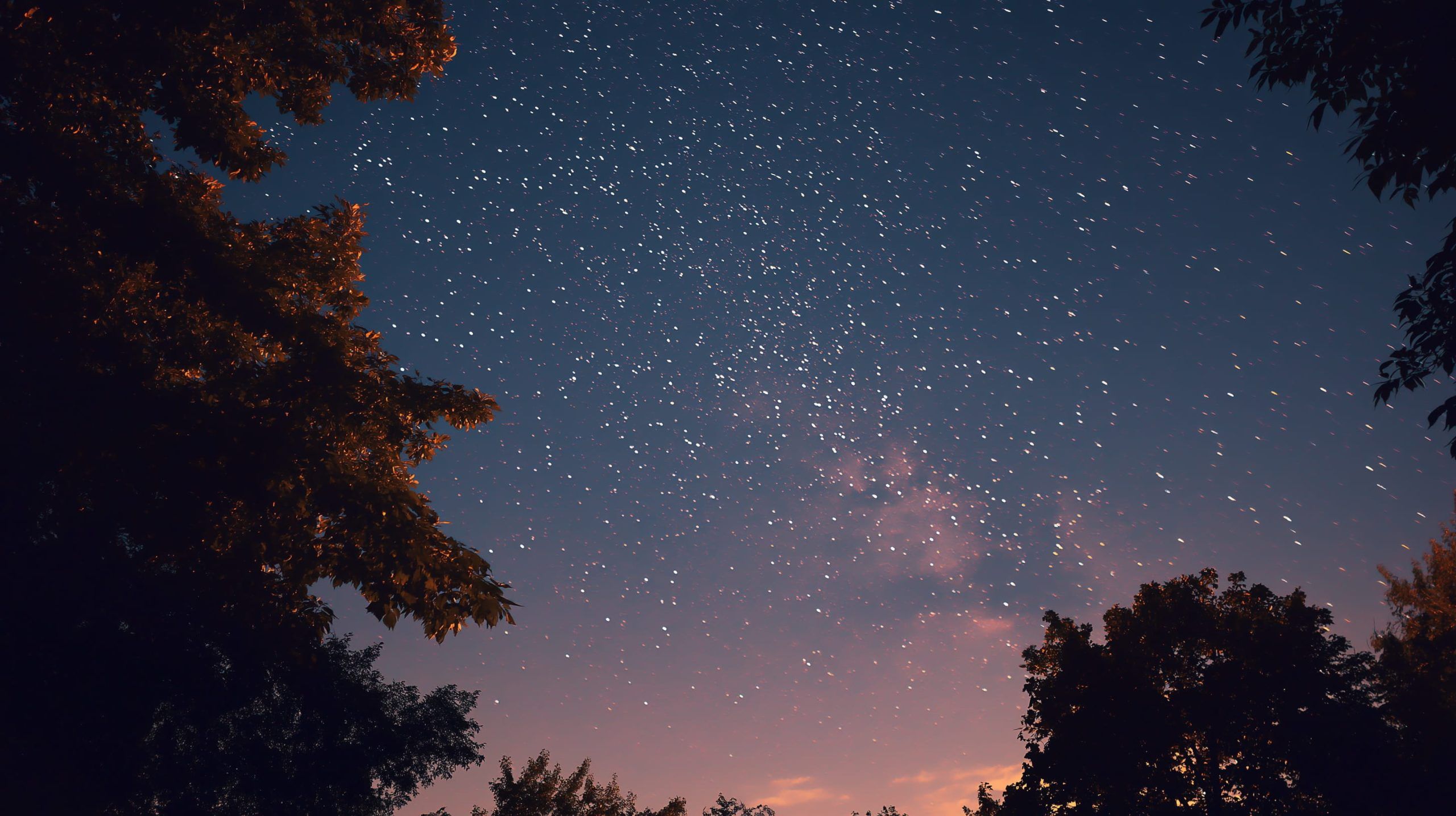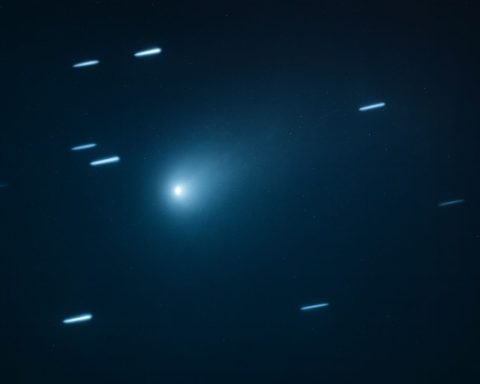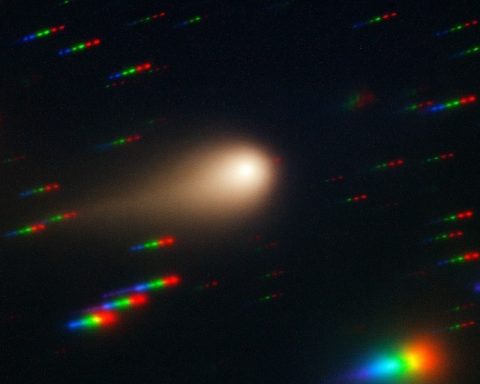- The Perseids are active now and ramp toward their mid-August peak, with up to 50 to 100 meteors per hour at best, though moonlight will reduce counts.
- The Southern Delta Aquariids are active, producing about 3–4 meteors per hour in early August as they radiate from Aquarius and originate from Comet 96P/Machholz.
- Alpha Capricornids peaked on July 30 and typically yield about 2 meteors per hour, with slow, bright trails and occasional fireballs.
- NOAA forecasts active to G1 (Minor) geomagnetic storm conditions from August 1–4 due to a recurrent high-speed solar wind stream, raising the chance of auroras at high latitudes.
- A solar prominence eruption on July 30 launched a coronal mass ejection that could deliver a glancing blow to Earth’s magnetic field around August 2, potentially brightening auroras.
- NASA notes we are in the upswing of Solar Maximum, increasing the frequency of solar flares and CMEs and boosting aurora opportunities.
- In the pre-dawn sky of August 1–2, six planets—Mercury, Venus, Jupiter, Saturn, Uranus, and Neptune—will be visible roughly between 4:00 and 5:00 a.m. local time.
- Venus and Jupiter will be close to each other for a conjunction on August 12, appearing as a near-double planet before sunrise.
- Saturn rises around 10:30 p.m. on August 1, shines at magnitude about 0.8 with the rings tilted toward Earth for the best view in over 15 years, and Titan may cast a shadow on Saturn in the early hours of August 3.
- SpaceX Crew-11 is scheduled to launch on August 1, 2025 at 11:43 a.m. EDT from Kennedy Space Center carrying four international crew members to the ISS, docking about 24 hours later on August 2, and SpaceX is set to deploy more Starlink satellites on August 4.
Get ready for an unforgettable weekend of celestial shows! On the nights of August 1–2, 2025, skies around the world will be buzzing with cosmic activity. From shooting star displays and potential auroras dancing at high latitudes, to a rare lineup of planets and even a crewed rocket launch, there’s something for every skywatcher. Below we break down all the major skywatch alerts and celestial phenomena happening globally this weekend – and how you can enjoy them. (No advanced telescope required!)
Meteor Showers Spark the Night
Perseid Meteor Shower – Preview: The Perseids, one of the year’s most beloved meteor showers, are active now and ramping up toward their mid-August peak [1]. You may catch a few Perseid meteors each hour on August 1–2 in pre-dawn hours, especially in the Northern Hemisphere. (They’ll peak on August 11–13, but moonlight will interfere then.) “At its best, the Perseid shower delivers 50 to 100 meteors per hour, but this year far fewer will be seen” due to the bright moon, notes Ed Krupp, director of LA’s Griffith Observatory [2] [3]. Still, Perseids are known for fireballs – extra-bright shooting stars that can blaze across the sky and leave glowing trails [4]. Keep an eye out for an occasional Perseid fireball even in moonlight.
Southern Delta Aquariids: Also active now is the Southern Delta Aquariid meteor shower, which peaked in late July. It continues to sprinkle a modest 3–4 meteors per hour in early August (visible from both hemispheres, with slightly higher rates in the Southern Hemisphere) [5]. These meteors, originating from Comet 96P/Machholz, are best seen after midnight, appearing to radiate from the Aquarius constellation.
Alpha Capricornids: Another minor shower, the Alpha Capricornids, just peaked on July 30. Don’t underestimate it – although it produces only ~2 meteors per hour [6], this shower is notorious for slow, bright meteors that sometimes turn into spectacular fireballs. If you see an unusually bright, leisurely meteor this weekend, it could be an Alpha Capricornid streaking from the direction of Capricornus [7].
Meteor Watching Tips: To maximize your meteor count, find the darkest sky possible, away from city lights. Face east (Perseid meteors will appear to radiate from the northeast sky) and be patient – give your eyes 15–20 minutes to adapt to the dark. No binoculars needed; use your naked eyes for the widest view. And whether you’re in the north or south of the globe, peak viewing is after midnight until dawn, when the meteor showers’ radiant points climb higher. As NASA meteor expert Bill Cooke advises, “lie flat on your back and look straight up” for the best chance to see meteors shoot overhead [8].
Solar Storms and Aurora Alerts
Nature’s fireworks aren’t only meteoric – they might also be geomagnetic. Space weather forecasters are monitoring the sun for activity that could spark auroras (the Northern Lights in the northern hemisphere, or Southern Lights down under) on Aug 1–2. In fact, NOAA predicted active to G1 (Minor) geomagnetic storm conditions from August 1–4 due to a recurrent high-speed solar wind stream flowing from a coronal hole on the sun [9]. G1-level geomagnetic storms are mild, but can trigger auroral displays that are visible at high latitudes – sometimes dipping into the northern U.S. states or central Europe under dark skies.
Adding to the aurora intrigue, the Sun just hurled some extra material our way: on July 30, a huge solar prominence erupted, launching a coronal mass ejection (CME) into space. Forecast models suggest this plasma cloud could deliver Earth a “glancing blow” around August 2 [10]. While not a direct hit, even a glancing CME impact can disturb Earth’s magnetic field enough to brighten the auroras. Bottom line: there’s a decent chance of auroral glows on the nights of Aug 1–2, especially in regions like Canada, Northern Europe, Alaska, and perhaps Tasmania or New Zealand in the south. As one solar scientist put it, one of the sun’s recent eruptions “may give Earth’s magnetic field a glancing blow on Saturday” (Aug 2) [11], so skywatchers at high latitudes should stay alert.
If you’re hoping to catch the Northern Lights, here are some tips: get as far north (or south, for aurora australis) as you reasonably can, find a dark location with a clear view of the northern horizon, and watch around local midnight to the early hours. Auroras might appear as faint greenish or reddish glows or dynamic curtains rippling across the sky. There’s no guarantee with aurora forecasts, but this weekend has better odds than usual thanks to the sun’s recent outbursts. Even NASA has noted we’re currently in the upswing of Solar Maximum, the Sun’s most active phase [12] – meaning more frequent solar flares and CMEs and, in turn, more aurora opportunities for skywatchers. Fingers crossed for a geomagnetic light show!
Planets Align for a Cosmic Parade
The early hours of August bring a planetary parade across the sky. Just before sunrise, six of our solar system’s planets will be visible at once – a rare sight if you know when and where to look [13]. Mercury, Venus, Jupiter, Saturn, Uranus, and Neptune all make an appearance in the sky during the pre-dawn window, roughly between 4:00 and 5:00 a.m. local time (timing varies by location) [14]. Venus and Jupiter are by far the easiest to spot: Venus, the “Morning Star,” blazes unmistakably bright above the eastern horizon, and Jupiter shines not far below it [15]. In fact, each day Jupiter is inching higher, closing the gap to Venus. “Keep watching Jupiter and Venus each morning and you’ll notice Jupiter begin to catch up with Venus,” as Sky & Telescope’s observers note [16]. The two brightest planets will meet in a close conjunction on August 12, appearing almost like a double planet before sunrise [17]. But even this weekend (Aug 1–2), you can see them relatively near each other, forming a lovely celestial pair in the twilight.
What about the other planets? Mercury is technically up there too, but very challenging – it hugs the horizon and fades out in the growing dawn light. Uranus and Neptune are higher up in the morning sky, but they’re too dim to see without a telescope or binoculars (Neptune in particular, at magnitude 7.7, requires optical aid [18]). Still, knowing they’re above the horizon at the same time as the brighter planets is exciting for enthusiasts – it’s this six-planet “parade” that has astronomers abuzz [19]. (Mars is the only major planet missing from the lineup, as it’s currently lost in the Sun’s glare, rising and setting nearly the same time as the Sun [20].)
Saturn deserves its own spotlight: by late evening (around 10:30 p.m. local time on Aug 1), Saturn is rising in the east and will be visible all night [21]. The ringed planet is nearing opposition and shining at a respectable magnitude ~0.8 – bright enough to see with the naked eye as a yellow-tinted “star” in Pisces. If you have a telescope, take a look! Saturn’s rings are beautifully tilted toward Earth this year, the best tilt in over 15 years [22], offering a great view of the ring system. And late on August 1 and 2, Saturn and the nearly full Moon will form a pretty pairing (the bright moon is just a week shy of full on Aug 9). On August 3, telescopic observers can even catch Saturn’s moon Titan casting its shadow on Saturn – a rare shadow transit event – but that occurs just after our target dates (in the early hours of Aug 3).
A Rare Saturn–Neptune Conjunction: Early August also treats us to an unusual planetary meetup: Saturn and Neptune are extremely close together in the sky this month. In fact, they’re approaching an exact conjunction (their second of three this year) on August 6, when they’ll be only about 1.1° apart – close enough to fit in a single low-power telescope view [23] [24]. Already on Aug 1–2, the two planets are only a little more than 1.5° apart in western Pisces. Seeing distant Neptune (magnitude 7.7) right next to Saturn is a treat; it’s a reminder of our solar system’s scale. “Viewing both planets together is rare,” notes Astronomy Magazine, since Neptune lies 1.9 billion miles beyond Saturn – yet here they are, appearing side by side from our earthly vantage [25]. You’ll need optical aid and star charts (or a planetarium app) to pinpoint Neptune near Saturn’s glare, but if you succeed, you can literally observe two planets nearly 3 billion miles apart in one glance!
Whether you have a telescope or just your eyes, be sure to look up these nights. Jupiter and Venus in the dawn will catch your attention even in city skies. Saturn in the late evening is a joy to see, and with binoculars you might even spot its largest moon Titan as a tiny dot nearby. This planetary extravaganza adds a special flavor to Aug 1–2, truly making it feel like the whole solar system is coming out to play.
No, the World Won’t Go Dark: Eclipse Rumor Debunked
If you saw panicky social media posts claiming the world will go dark on August 2, 2025 due to a solar eclipse – rest assured, it’s not true. Despite viral rumors, there is no solar eclipse on Aug 1 or 2, 2025 [26]. (In fact, there isn’t any kind of eclipse on those dates.) Astronomers suspect this internet hoax arose from a date mix-up with a future event. “A total solar eclipse is indeed expected on August 2 – but in 2027, not 2025,” the Times of India notes, referencing NASA’s eclipse records [27]. August 2, 2027 will feature an extremely long total solar eclipse (over 6 minutes of totality at peak) that some are calling the “Eclipse of the Century” [28]. But that’s two years away.
For the record, the next eclipse of 2025 will be a partial solar eclipse on September 21, 2025, visible from parts of the Southern Hemisphere (e.g. Australia, New Zealand, and Antarctica) [29]. And a total lunar eclipse will occur on September 7–8, 2025, visible across Africa, Europe, and Asia. None of these coincide with August 1–2. So if you hear talk of an Aug 2 eclipse or “days of darkness,” you can confidently ignore it – it’s been debunked by NASA and observatories [30]. Enjoy the real celestial events happening this weekend, and don’t fall for the fake ones!
Space Launches & Satellite Highlights
Not all the action is in nature – humans are adding to the sky show this weekend too. SpaceX is slated to launch a crew of astronauts toward the International Space Station on August 1, 2025. This mission, NASA’s SpaceX Crew-11, is the eleventh operational crewed flight of the Crew Dragon spacecraft under NASA’s Commercial Crew Program [31]. Liftoff is scheduled for 11:43 a.m. EDT on Aug 1 from Kennedy Space Center in Florida [32]. If all goes on time, a Falcon 9 rocket will streak into the midday sky carrying four international crew members bound for the ISS. (Daytime launches aren’t as visually dramatic for skywatchers as night launches, but locals and anyone tuning into NASA’s live stream will get to see the rocket and famous “Dragon” capsule take flight.) The Crew-11 astronauts are set to dock at the space station roughly 24 hours later, so by the end of Aug 2 they should be safely aboard the ISS, beginning their six-month science mission in orbit.
While Crew-11 grabs the headlines, it’s not the only satellite action this week. Hot on its heels, SpaceX has another launch on August 4 (just after our weekend) to deploy more Starlink internet satellites [33]. That means in the nights following, keen observers might spot the eerie “train” of new Starlink satellites crossing the sky shortly after deployment – a string of bright dots moving in unison. Additionally, satellite trackers note that dozens of other satellites and the ISS itself will make routine passes each night. You can check a satellite-tracking app to see if the ISS or any bright satellites will fly over your location on Aug 1–2 around dawn or dusk. Seeing the ISS glide overhead – appearing as a fast-moving star – can be a thrill, especially knowing the Crew-11 astronauts will soon call it home.
Lastly, a quirky note for satellite fans: if you’re out late watching meteors or planets, you might catch the occasional flash of an Iridium flare or other satellite glint. These quick flares of light (caused by satellite panels reflecting sunlight) are not as common as they once were, but they’re a fun surprise if you see one. They underscore how our night skies are a busy place, with human-made objects now sharing the stage with natural wonders.
Sources: The information in this report is drawn from expert astronomy resources and official observatories. Forecasts of auroras and geomagnetic activity come from NOAA’s Space Weather Prediction Center [34] and analyses by solar scientists [35]. Meteor shower details are provided by the American Meteor Society and NASA [36] [37]. Planetary alignment insights come from astronomy publications including Astronomy and BBC Sky at Night [38] [39]. Launch schedule and mission details were confirmed via NASA and Space Coast launch reports [40]. (See the linked citations throughout for full details and further reading.) Here’s to clear skies on August 1–2, and happy skywatching!
References
1. www.amsmeteors.org, 2. phys.org, 3. phys.org, 4. phys.org, 5. www.amsmeteors.org, 6. www.amsmeteors.org, 7. www.amsmeteors.org, 8. phys.org, 9. keeptrack.space, 10. earthsky.org, 11. earthsky.org, 12. www.adlerplanetarium.org, 13. www.skyatnightmagazine.com, 14. www.skyatnightmagazine.com, 15. www.skyatnightmagazine.com, 16. www.skyatnightmagazine.com, 17. www.skyatnightmagazine.com, 18. www.astronomy.com, 19. www.skyatnightmagazine.com, 20. www.skyatnightmagazine.com, 21. www.adlerplanetarium.org, 22. www.astronomy.com, 23. www.astronomy.com, 24. www.astronomy.com, 25. www.astronomy.com, 26. timesofindia.indiatimes.com, 27. timesofindia.indiatimes.com, 28. timesofindia.indiatimes.com, 29. timesofindia.indiatimes.com, 30. timesofindia.indiatimes.com, 31. www.visitspacecoast.com, 32. www.visitspacecoast.com, 33. www.visitspacecoast.com, 34. keeptrack.space, 35. earthsky.org, 36. www.amsmeteors.org, 37. phys.org, 38. www.astronomy.com, 39. www.skyatnightmagazine.com, 40. www.visitspacecoast.com










